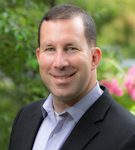 SHRM’s new Talent Acquisition Specialty Credential, announced last week, is as much a symbol of the organization’s new embrace of recruiting as it is a badge of HR focus. Two years in the development, the credential is perhaps the most significant step yet in a program intended to reengage recruiting members of the Society who were questioning whether the organization had much to offer them.
SHRM’s new Talent Acquisition Specialty Credential, announced last week, is as much a symbol of the organization’s new embrace of recruiting as it is a badge of HR focus. Two years in the development, the credential is perhaps the most significant step yet in a program intended to reengage recruiting members of the Society who were questioning whether the organization had much to offer them.
An article on the SHRM website explains: “In 2015, SHRM research found that the recruiting segment of the HR market was not being equally represented within SHRM at the same levels as other specialty areas, and as a result, many recruiters and talent acquisition professionals didn’t see SHRM as addressing their needs.” Coincidentally, that was the same year a group of senior talent acquisition professionals and leaders began to organize an independent recruiting group that is today’s Association of Talent Acquisition Professionals.

Tony Lee, SHRM’s vice president of editorial who is also spearheading the TA initiative, said the impetus for stepping up services for recruiters was not competitive concern, but a recognition “we dropped the ball on talent acquisition.” Interviewed last week, Lee said that in the aftermath of the Great Recession, as hiring grew stronger, recruiting as a professional discipline had a similar resurgence. By 2015, member feedback and focus groups conducted at that year’s Talent Management Conference made it clear “We weren’t servicing the recruiting contingent the way we should.”
2015 was also when Lee joined SHRM. SHRM’s leadership was already moving to enhance its talent acquisition outreach, but Lee’s arrival gave it greater momentum. Years ago, he was editor of the National Business Employment Weekly, a Dow Jones jobs and careers publication. In the 1990s he launched a series of online classifieds and news verticals for the Wall Street Journal that included a careers site with job listings. And just before joining SHRM he was editor and publisher of CareerCast.com, a career site for job seekers he founded when he went to work for Adicio, the job board platform provider.
Since 2015, SHRM relaunched its Talent Management newsletter as a twice a month Talent Acquisition newsletter, which, Lee says, has about 80,000 subscribers; added a full-time TA reporter to its staff, and; rebranded the annual Talent Management Conference as a Talent Conference. The huge annual SHRM conference now also has a TA track.
Regaining lost ground
In some ways, these steps can be seen as an attempt to regain ground lost almost two decades ago. SHRM acquired the struggling Employment Management Association at the turn of the century. An early recruitment-focused group, EMA for many years was the primary voice of career recruiters. But its growth stalled and vendors and consultants came to play an outsized role in the organization. Merging with SHRM it was hoped would give it new energy. However, it became lost when SHRM reorganized its interest groups, folding EMA into the talent management sector.
“Tony was well aware of SHRM’s shortcomings vis a vis recruiting and should be credited with these new steps,” Gerry Crispin told me in an email. A leading voice in talent acquisition and one of the drivers behind the formation of ATAP, Crispin suggested the organizing effort played at least some part in creating a sense of urgency at SHRM. “He knows the potential problems if SHRM fails to defend HR’s ‘ownership’ of recruiting as an HR function.”

What problems might that be? For one, it could mean the loss of thousands of SHRM’s quarter-million plus members, or, at a minimum, divided loyalties. It’s no secret that many of the leading TA voices have long suggested recruiting should be a profession separate and distinct from human resources. In some of the largest businesses, talent acquisition already has a separate reporting track. It’s a point that Crispin, who’s differed with SHRM leadership in the past, made in his email: “Just as specialties in medicine, engineering, business and other professions have segmented as they’ve evolved, it’s really time for Talent Acquisition as a profession to step up to the obvious that it can be a standalone profession… but not without its own Professional Association.
“SHRM is a successful sister organization with a debatable flawed philosophy that it can both be the steward of HR’s body of knowledge and certify the understanding of the same. The incentive for the former is to keep up with changes. The latter’s incentive is to fix it in this moment.”
And that brings us back to the credential.
First, as ATAP Executive Director and a founder Ben Gotkin points out, the worth of the credential is still to be decided. “It’s not equal to a PHR or a SPHR.” he said, a reference to the professional certifications offered by HRCI. The rigor of the training and the nature of the test required to earn the credential have not yet been reviewed by the broader TA community. “My reaction (to the new credential),” he said in our interview, “is I’m not sure yet” of its significance.

Don’t think that means he was critical of the program; he hasn’t seen the specifics, he said. As he pointed out, no recruiting training program anywhere is “based on any sort of peer-validated, deep academic discipline. That work just hasn’t been done yet.” ATAP hopes to eventually do that, he said, adding that it’s a long-term goal.
SHRM’s credential — a designation different than a certification — was designed more for HR people at smaller companies who want to show they have a grasp of the essentials of talent acquisition even though their job title is HR Generalist.
“Part of the reason for creating the credential,” explained Lee, “a big part, was we were hearing a lot from folks who were recruiters at small and medium sized companies (that their) titles didn’t reflect that they were in talent acquisition. They were HR generalists.” But when they recruited, they discovered they “really liked it,” Lee added. So they’d start “a job hunt to get a full time talent acquisition position, but they would get challenged because their title was HR generalist.”
Credential program detailed
The credential allows them to demonstrate to employers that they went through a training program and “they can say to employers ‘See, I’m proven. I know what I’m doing,” he said.
As outlined on SHRM’s website and further detailed by Jeanne Morris, director of educational programs who joined us on the interview call, the program has three components:
- An in-person or virtual seminar titled Talent Acquisition: Creating Your Organization’s Strategy. The in-person seminar runs over two days from 8:30 a.m. to 5 p.m. The online seminar meets twice a week for 90 minutes and lasts four weeks.
- Six self-paced e-learning courses that take about 5 hours.
- A 50 question final exam.
Morris said the program was designed with help from an outside expertise panel, just like those SHRM has for other HR specialties. Created last year, the 15 member panel is the first one specifically for talent acquisition. The program will get its official kickoff at the SHRM conference in June, though Morris said she’s seen a lot of enthusiasm, and registrations have already begun to arrive. The first of the live seminars is underway today in Denver.
